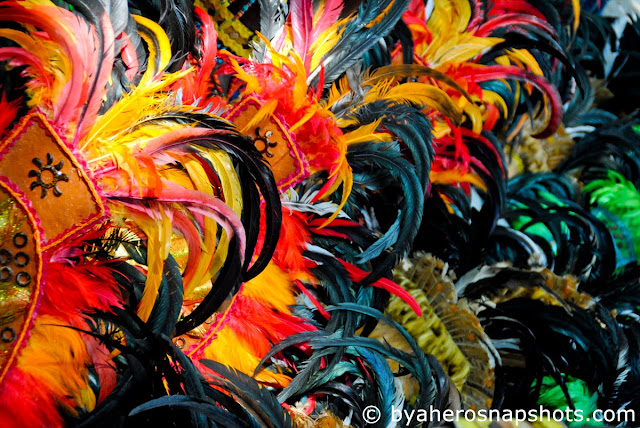Dinagyang Festival 2017 Schedule of Activities
Showing posts with label Iloilo City. Show all posts
Showing posts with label Iloilo City. Show all posts
Tuesday, January 10, 2017
Wednesday, December 23, 2015
Monday, April 15, 2013
Aliwan Fiesta 2013: Tribu Panayanon of Dinagyang Festival | Iloilo City
Aliwan Fiesta 2013 Grand Champion
Dinagyang Festival of Iloilo City
Related Links:
Aliwan Fiesta 2013 Grand Parade & Streetdance Showdown
- Mango Festival | Zambales
- Padang-Padang Festival | Parang, Maguindanao
- Panagbenga Festival | Baguio City
- Zamboanga Hermosa Festival | Zamboanga City
- Mahaguyog Festival | Sto. Tomas, Batangas
- Pandang Gitab Festival | Oriental Mindoro
- Tribu Panayanon of Dinagyang Festival | Iloilo City
- Pasaka Festival | Tanauan Leyte
- Adivay Festival | Benguet
- Ang Tipulo | Antipolo, Rizal
- Dinagsa Festival | Muntinlupa City
- Dalaksagaw | Manila
- Boling-Boling | Catanauan, Quezon
- Kalivungan Festival | North Cotabato
- Kalilangan Festival | General Santos City
- Sagayan Festival | Buluan, Maguindanao
- Meguyaya Festival | Upi, Maguindanao
-----------
Sunday, March 10, 2013
Tuesday, September 11, 2012
Dinagyang Festival 2013 Schedule of Activities
DINAGYANG FESTIVAL 2013 SCHEDULE OF ACTIVITIES
January 25
- Fluvial Procession
January 26
- Kasadyahan Cultural Festival
January 27
- Ati Streetdance Competition
Saturday, September 4, 2010
Friday, September 3, 2010
Monday, July 5, 2010
Iloilo City
Iloilo City is a highly urbanized city in the Philippines and the capital city of Iloilo province. It is the political center of the Western Visayas region, as well as the center of the Iloilo-Guimaras Metropolitan Area.
The history of Iloilo City dates back to the Spanish colonial period, starting out as a small and incoherent grouping of fishermen's hamlets from the Iloilo River by a large swamp which after 1855 became the "Queen City of the South", and later given the honorific title of "La Muy Noble Ciudad" (English: The Most Noble City) by the Queen Regent of Spain. At the turn of the twentieth century, Iloilo City was second to the primate city of Manila, with stores along Calle Real selling luxury products from all over the world, an agricultural experimental station established at La Paz in 1888, a school of Arts and Trades which opened in 1891, and a telephone network system operating in 1894.
Calle Real
Sunday, July 4, 2010
San Jose Church in Iloilo City
The first church in Iloilo was built by the Jesuits around 1607 to serve the needs of the military stationed in Punta, as Iloilo was then called. However, on 29 April 1617, the Augustinians established San José, a house of the order. They held San José until 1775 when administration was given to the secular clergy. In 1868, Iloilo along with La Paz (Loboc) was given to the Augustinians in exchange for Jaro which had become the seat of the newly founded diocese. Fr. Mauricio Blanco was named prior in 1873 and he started enlarging and repairing an older church built of light material. Later he decided to build a new church of stone and brick, after the Miguelete church of Valencia del Cid (Spain). However, he was unable to fulfill his plans, and stopped when he had completed two stories. He finished the church, added two towers one with a clock and barometer and built a convent. The towers were begun on 14 November 1893. The church was repaired in 1902 under Fr. Manuel Diez, restored in 1945 under architect and engineer Mariano Cacho following plans by Fr. David Caseres. The altars were gilded by Fr. Jesús Fernandez. During World War II, the church was saved from being bombed by the Americans after they received information that Japanese were not holed in the church as they were previously informed. Between 1980-82 the church was renovated, a new marble floor was laid, under the direction of poet-writer, Fr. Gilbert Centina. San José is one of the few parish in the Philippines still under the Augustinians.
Plaza Libertad
Plaza Libertad is the plaza for La Punta de Iloilo. Formerly known as Plaza Alfonso XII, it is surrounded by the Iglesia de San Jose de Placer (Church of Saint Joseph), the ancestral house of the Lacsons and the ruins of their botica (pharmacy), the city hall, Hotel Iloilo (now Landbank) and the Masonic Temple Building (which is at exact opposite of the church).
Friday, July 2, 2010
Jaro, Iloilo City
Jaro is one of the six districts of Iloilo City, in the Philippine province of Iloilo, on the island of Panay, in the Western Visayas. Its original name was Salog or Saro. It had been one of the richer areas of Iloilo City even during the Spanish colonial period (1521-1898) and probably the richest town of the entire colony.
Thursday, July 1, 2010
Cathedral of Jaro, Iloilo
The Jaro Cathedral is among the churches in the Philippines that has its belfry separated from it, across the national highway and situated in Jaro's Plaza. Historically, was used as a ?lookout? tower for sea raiders. The Jaro Cathedral is the first and only cathedral in Panay built in 1864. One of its high points in Panay's history was the visit of Pope John Paul VI, conducting a mass in 1982.
The Jaro Cathedral is among the churches in the Philippines that has its belfry separated from it, across the national highway and situated in Jaro's Plaza. Historically, was used as a ?lookout? tower for sea raiders. The Jaro Cathedral is the first and only cathedral in Panay built in 1864. One of its high points in Panay's history was the visit of Pope John Paul VI, conducting a mass in 1982.
at Plaza Libertad in Iloilo City
Plaza Libertad formerly known as Plaza Alfonso XII, one of the 6 beautifully landscaped plazas in Iloilo. Plazas can be found in each of the districts of Iloilo City, a clear manifestation of the strong Spanish influence in this city. Plaza Libertad on the other hand is located right at the heart of the city, at the far end of the historic Calle Real. It served as the leisure ground in the past for the residents of downtown Iloilo and later declared a National Historical Institute site in 1996 as recognition for its contribution to the Philippine History and freedom.
Subscribe to:
Comments (Atom)
Popular Posts
-
PHILIPPINE FESTIVALS AND EVENTS JANUARY 2015 January 1 | NEW YEAR’S DAY (Holiday) January 1 | AGUMAN SANDUK | Minalin, Pa...
-
Festivals in Camarines Norte • Pinyasan Festival – Camarines Norte • Rahugan Festival - Basud • Palong Festival - Capalonga • Bant...
-
PHILIPPINE FESTIVALS AND EVENTS JANUARY 2016 January 1 | NEW YEAR’S DAY (Holiday) January 1 | AGUMAN SANDUK | Minalin, Pa...
-
Pinangat Festival 2013 Schedule of Activities June 10 - 24 | Camalig, Albay ---- Source: Jan Edmund Dominic Bailon
-
CALENDAR OF FESTIVITIES JANUARY January 1 | NEW YEAR’S DAY (Holiday) January 1 | AGUMAN SANDUK | Minalin, Pampanga Januar...
-
Here is the list of holidays in the Philippines for 2014, declared by virtue of Proclamation No. 655, s. 2013.
-
C+ALMASOR: Catanduanes Credit: Ronald Rebutica/Warm Albay
-
PINANGAT FESTIVAL 2012 June 10-24, 2012 Camalig, Albay, Philippines C A L E N D A R O F E V E N T S Agri-Trade Fair “GREEN EXPO” Gatew...
Popular Posts
-
Festivals in Camarines Norte • Pinyasan Festival – Camarines Norte • Rahugan Festival - Basud • Palong Festival - Capalonga • Bant...
-
CALENDAR OF FESTIVITIES JANUARY January 1 | NEW YEAR’S DAY (Holiday) January 1 | AGUMAN SANDUK | Minalin, Pampanga Januar...
-
Pinangat Festival 2013 Schedule of Activities June 10 - 24 | Camalig, Albay ---- Source: Jan Edmund Dominic Bailon
-
PHILIPPINE FESTIVALS AND EVENTS JANUARY 2016 January 1 | NEW YEAR’S DAY (Holiday) January 1 | AGUMAN SANDUK | Minalin, Pa...
-
The town of Tarlac has had a colorful and significant history. Its story may very well be story of Tarlac province itself, which came into b...
-
Palanyog Festival Palapas, Ligao City, Albay The Local Government of Palapas launched the festival last October 2014 that s...
Popular Posts
-
Festivals in Camarines Norte • Pinyasan Festival – Camarines Norte • Rahugan Festival - Basud • Palong Festival - Capalonga • Bant...
-
St. Luke's Medical Center is a tertiary referral hospital located in Bonifacio Global City, Taguig City. It is the most advanced ho...
-
CALENDAR OF FESTIVITIES JANUARY January 1 | NEW YEAR’S DAY (Holiday) January 1 | AGUMAN SANDUK | Minalin, Pampanga Januar...
-
Green Park Resort, Atimonan Quezon RESORTS & HOTELS IN ATIMONAN, QUEZON PROVINCE De Gracia Beach Resort Brgy. Balubad 0923‐7...
-
PHILIPPINE FESTIVALS AND EVENTS JANUARY 2016 January 1 | NEW YEAR’S DAY (Holiday) January 1 | AGUMAN SANDUK | Minalin, Pa...
-
OAK PARK HOTEL & RESIDENCES Padillo Building, Enriquez cor. Hermana Fausta Sts., 4301 Lucena City Phone: (042) 373-6764 or 710-6148 DIAM...
-
The Oriental Legazpi Hotels THE ORIENTAL LEGAZPI (First Class) Sto. Nino Village, Taysan, Legazpi City Tel: (+632) 470 9737 | 404 7501 |...































.jpg)

.jpg)


